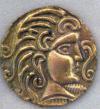Light Emitted by Humans Could Be Used for Disease Diagnosis

A group of researchers from the Czech Republic were intrigued that living organisms emit small amounts of light resulting during oxidative metabolism, when oxygen is used to create energy by breaking down carbohydrates. The researchers began to think about how detecting this light could have potential for biomedical diagnostics.
At the Biophysical Society’s 61st Annual Meeting, held Feb. 11-15, 2017, in New Orleans, Louisiana, Michal Cifra, head of the Bioelectrodynamics research team at the Institute of Photonics and Electronics, The Czech Academy of Sciences, presented the group’s work within this realm.
“Any organism in which oxidation takes place is a source of endogenous chemiluminescence [the light originates from within],” said Cifra. “Light is also produced during the course of normal oxidative chemical reactions in the organism — like those that occur during breathing — without external stimulation of light or the addition of external luminescent probes,” Cifra said.
By using sensitive light detection systems, Cifra and colleagues are capturing these weak light signals. “The endogenous chemiluminescence of organisms can act as natural ‘reporters’ of oxidative metabolism and oxidative stress,” he said.
Invisible oxidative stress becomes visible: image on left shows an ordinary photo of a hand, while the image on the right shows ultrasensitive imaging capturing chemiluminescence—with oxidative stress on three spots induced by researchers.
Credit: Cifra et al.
The group’s work is significant because it presents a unique approach for monitoring oxidative stress — it also happens to be label-free and noninvasive, and runs almost in real time. Cifra pointed out that, additionally, “our technique has a rather low operation cost because it doesn’t require the addition of external chemical probes.”
While several studies of imaging chemiluminescence from organisms have previously been carried out, until now no quantified imaging of the oxidative processes in human skin had been performed.
An imbalance of redox regulation and oxidative stress in humans is related to neurodegenerative diseases — such as Alzheimer’s and Parkinson’s — and inflammatory diseases like arthritis, and also plays a role in cancer development.
Convenient monitoring of oxidative stress might enable, when combined with other methods, early-stage diagnostics and tracking of these diseases. “Our technique is a convenient method for monitoring oxidative stress,” Cifra noted. “To fully unleash its power, we need to further improve its sensitivity, and then obtain calibration data on patients and subjects of different skin types, health conditions, etc.”
The researchers’ goal now is to “develop the means to physically modulate and amplify the processes leading to endogenous chemiluminescence,” Cifra said. “Such physical modulation, via electric fields, will give us control of the phenomenon. Pulsed electric fields delivered through micro or nanostructured on-skin chips — with optical antenna functionality — are the way to go to increase the sensitivity of the method.”
2858-Pos/B465 “Non-invasive label-free imaging of oxidative processes in human skin” is authored by Michael Poplova, Eduard P.A. Van Wijk and Michal Cifra. It will be presented in a session at 10:30-12:30 p.m. Central Time on Wednesday, Feb. 15, 2017 in Hall B-2 & C of the Ernest N. Morial Convention Center. Abstract: http://www.abstractsonline.com/pp8/#!/4279/presentation/827
Source:
Anyone can join.
Anyone can contribute.
Anyone can become informed about their world.
"United We Stand" Click Here To Create Your Personal Citizen Journalist Account Today, Be Sure To Invite Your Friends.
Before It’s News® is a community of individuals who report on what’s going on around them, from all around the world. Anyone can join. Anyone can contribute. Anyone can become informed about their world. "United We Stand" Click Here To Create Your Personal Citizen Journalist Account Today, Be Sure To Invite Your Friends.
LION'S MANE PRODUCT
Try Our Lion’s Mane WHOLE MIND Nootropic Blend 60 Capsules
Mushrooms are having a moment. One fabulous fungus in particular, lion’s mane, may help improve memory, depression and anxiety symptoms. They are also an excellent source of nutrients that show promise as a therapy for dementia, and other neurodegenerative diseases. If you’re living with anxiety or depression, you may be curious about all the therapy options out there — including the natural ones.Our Lion’s Mane WHOLE MIND Nootropic Blend has been formulated to utilize the potency of Lion’s mane but also include the benefits of four other Highly Beneficial Mushrooms. Synergistically, they work together to Build your health through improving cognitive function and immunity regardless of your age. Our Nootropic not only improves your Cognitive Function and Activates your Immune System, but it benefits growth of Essential Gut Flora, further enhancing your Vitality.
Our Formula includes: Lion’s Mane Mushrooms which Increase Brain Power through nerve growth, lessen anxiety, reduce depression, and improve concentration. Its an excellent adaptogen, promotes sleep and improves immunity. Shiitake Mushrooms which Fight cancer cells and infectious disease, boost the immune system, promotes brain function, and serves as a source of B vitamins. Maitake Mushrooms which regulate blood sugar levels of diabetics, reduce hypertension and boosts the immune system. Reishi Mushrooms which Fight inflammation, liver disease, fatigue, tumor growth and cancer. They Improve skin disorders and soothes digestive problems, stomach ulcers and leaky gut syndrome. Chaga Mushrooms which have anti-aging effects, boost immune function, improve stamina and athletic performance, even act as a natural aphrodisiac, fighting diabetes and improving liver function. Try Our Lion’s Mane WHOLE MIND Nootropic Blend 60 Capsules Today. Be 100% Satisfied or Receive a Full Money Back Guarantee. Order Yours Today by Following This Link.






